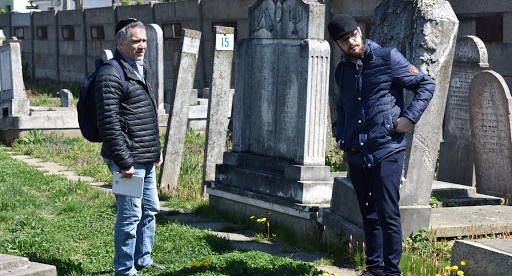by Miko Peled
My own family history has no connection to the Holocaust. My family were Zionists who came to colonize Palestine in the 1920’s and so even though I knew about the Holocaust and I knew people who were survivors, I have no personal connection to it. I never thought I would write about events relating to the Holocaust either, but then something happened. Working on a book about the Haredi Jewish community, I was curious to see the places from which they came.
I have been in touch and made friends with many people within the Ultra Orthodox Jewish communities in New York and London and many if not most are the children and grandchildren of survivors of the Holocaust. Besides that, many of the names of the Yeshivas, some the great institutions of learning in the Haredi world, carry the names of towns in Eastern and Central Europe. One of these is Satmar.
An Unexpected Journey
The Satmar Hasidic community, one of the largest and most prominent in the world today, got its name from the city that used to be Szatmar in Hungary and is now Satu Mare, in Romania. Rabbi Yoel Teitelbaum, a luminary among Rabbis of the orthodox Jewish world, became the Rebbe, or head of the Yeshiva at Satmar in 1928. He survived the Auschwitz death camp and after he moved to New York where he revived this great community that was all but lost in the holocaust and now spans the globe with yeshivas and followers everywhere.
Though there were many groups within the Jewish community in the city, even among the orthodox Jews themselves, Rabbi Teitelbaum was the chief among the Rabbis, and he was the one everyone revered and came to hear.
I was curious to see what Satmar is like, what happened to it, and whether or not there is a Jewish community, or any community there that appreciates the great traditions that have sprung and now flourish from this and other towns and that still carry their names. So I decided to begin with Satmar, which I thought was in Hungary.
It was in Hungary at one point, but then, after WW-1 it became part of Romania. Then Romania was forced to cede parts of Transylvania including Satu Mare to Hungary, but after WW-2 they were returned to Romania. So I flew to London and from London to Cluj, in Eastern Romania and then took a taxi to Satu Mare. It takes three and half hours to drive the 100 miles from the airport in Cluj, to the small town of Satu Mare. It is a winding country road, which takes you through a continuous flow of charming villages and rolling hills. In the spring, which is when I was fortunate enough to travel, the sides of the road are lined with never ending cherry blossoms. As far as the eye can see along the road and into the hills in the distance, the trees are covered in pinkish white hue.
Visiting Satu Mare
Before WW2 the town numbered about 45,000, with the Jewish residents making up about one third of the population. Some 13,000 Jewish people lived in the city and another 5,000 in the surrounding villages. Satu Mare today has a population of some 100,000 with about 200 Jewish people. The sharp decline in the Jewish population was a direct result of the Holocaust.
I arrived in this lovely, quiet town at 9pm only to find the front door of my hotel locked and a note with a phone number stuck to it. I asked the taxi driver who brought me from Cluj if he would be kind enough to call the number. He found out that my reservation was cancelled and the hotel was full. However, the person on the phone said that I should wait there and he would come and take me to another hotel.
As we were driving to the new hotel I mentioned that I would only be staying in Romania for two days and then I would go to Ukraine. “So will I,” said my newfound friend. “If you want a ride I can take you, the drive is only about two hours and I leave on Tuesday at 10 am.” He dropped me off in what turned out to be a lovely old hotel, and we agreed to travel together to Ukraine. That was a good ending to a very long day.
Not all my meetings in Satu Mare were accidental. My friend Rabbi Dovid Feldman from Neturei Karta in New York gave me the name of my first contact in Satu Mare. In an email he sent me before I left, Rabbi Feldman wrote, “Gavriel is the only Shomer Shabbos (observant Jew who keeps Shabbos, or the Jewish Sabbath), in Satu Mare but he is not on the best terms with secular Jews. I am not sure how you want to handle this, but I will leave it up to you.” I called the number Rabbi Feldman gave me and spoke to Gavriel. He is a very nice and intelligent young man and we had an excellent chat for about 20 minutes. We agreed to meet at the gate to the cemetery which was about 20 minute walk from my hotel.
Gavriel and I spent a couple of hours walking through the ancient cemetery (see photo above), and talking about what used to be a glorious Jewish community. He suggested that I meet with a Jewish woman he knows, who he said knew more than he did about the city and its history. She however, was not available and instead she gave me the number for Paul Dancu, a contact for which I will forever be grateful. Paul came to my hotel that evening. We sat for maybe a minute or two, before he offered to take me around to show what used to be the Satu Mare ghetto and other important Jewish sites around the city.
Satu Mare Ghetto
The Satu Mare ghetto is not marked and no effort was made to make it visible. The synagogue where the community used to pray was allowed to collapse as a result of neglect and only a sign remains where the synagogue once stood.
I kept asking Paul if there is any commemoration or recognition that the ghetto existed. “Wait,” he kept saying, “you will see.” Finally he showed me a street name. The street that was once the main street of the ghetto now called, “Street of Deported Martyrs.” A pretty vague name, I thought, considering there is no other mention of the ghetto’s existence.

Paul walked at a very fast pace, talking and pointing things out the entire time. I tried to keep up with him as best I could, recording what he was saying on my phone and taking pictures all at the same time. If ever there was a walking encyclopedia, Paul is it. He knows every street and every corner, every house and every space where a house once stood. He knows all the sad, tragic stories of people who were part of the community and are now all dead.
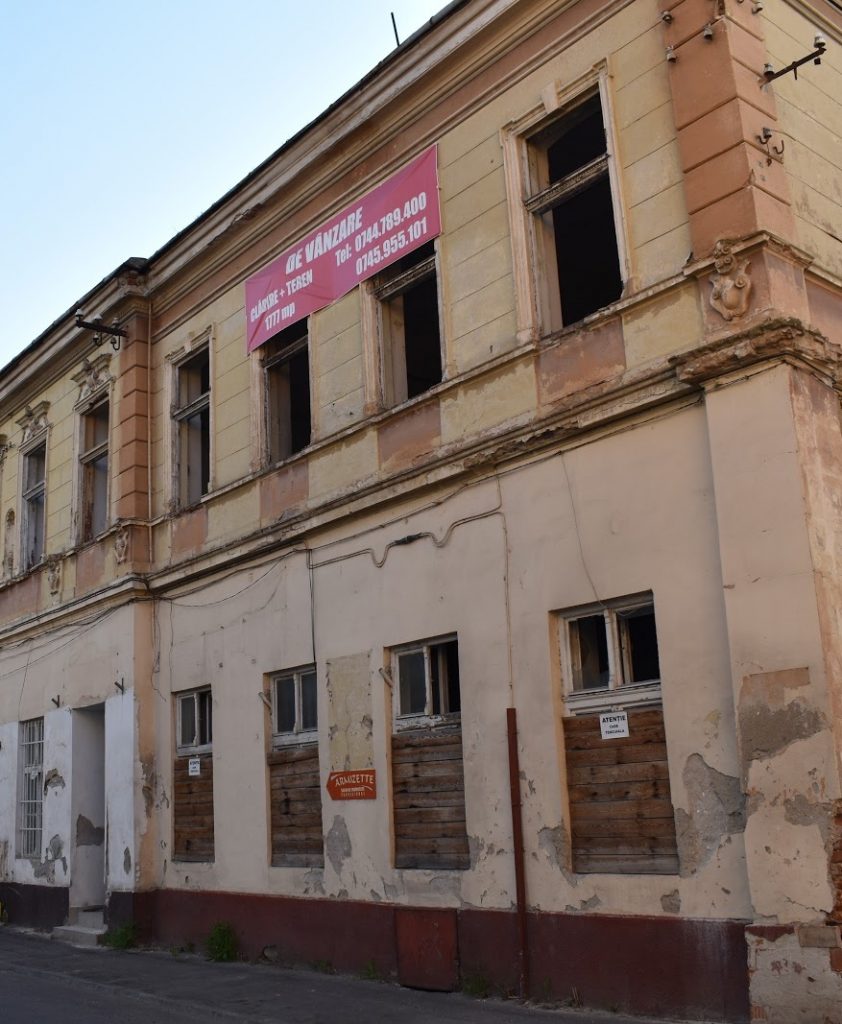
“Once the Nazis came, it took three days for the entire Jewish community to be moved into the Ghetto,” Paul said as he pointed out the boundaries of the Satu Mare Ghetto. Although he couldn’t say for sure, it seemed to me like it was no larger than one half of a square mile. The ghetto was opened on May 3, 1944. The final transport taking Jews from the ghetto to their death in Auschwitz left on June 1.
“Eighteen thousand people moved in three days, then shipped out over four weeks?” I asked. “Yes. The transports to Auschwitz began and within one month there were no Jews left.” With few exceptions who managed to escape or hide, all eighteen thousand men women and children were killed were sent to the concentration camp. “After the war about 2,500 Jewish survivors returned and by 1968 most of them had immigrated. My mother in law is 93, her family name was Zelig, like the Woody Allen movie, she is a survivor. She was saved four times from Dr. Mengele’s selections.”
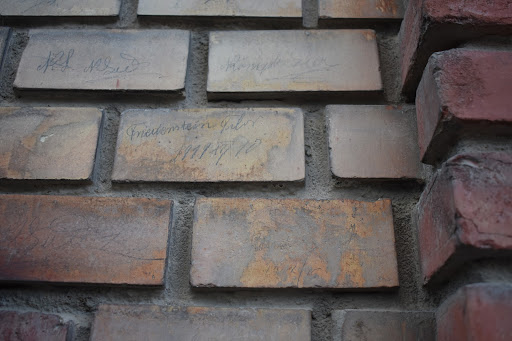
“Look at the writing on the bricks,” Paul said as he pointed the red bricks of the some the older homes. These are the names of the families that lived in this house. The names were written by the families themselves some in ink and others engraved. The names Frank, Hersh, Feidler, Konigstein and so on, names upon names upon names. Entire families forced into a house, one room per family.
No Satmar in Satu Mare
There are no Haredi Satmar Jews living in Satu Mare today. The community is not attached to the place, or to any particular country for that matter. Either way, it is hard to imagine that they would be able to maintain their way of life under the communist regime which existed in Romania after the war and until the fall of the Eastern Communist bloc.
The city is, however, included in a sort of pilgrimage route that Haredi Jews take through central and eastern Europe. There is even an app called Nesiya Tova where one can locate the graves of great Rabbis, synagogues, cemeteries, guest houses for Haredi Jews and nearby airports. The app can be used for creating an entire route, which of course, I did.
But there was one thing Paul could not explain. A question that begs an answer yet an answer doesn’t seem to be available, at least not to me. How does it happen that 18,000 people, one third of a city, people who have been part of the community for generations, are forced to leave their homes and move into a ghetto, then shipped out and systematically killed. Where were the neighbors, the friends, people whose children sat next to these children in a classroom, played together in the playground, visited one another, and are suddenly taken away, shut in a ghetto and then shipped to their deaths?
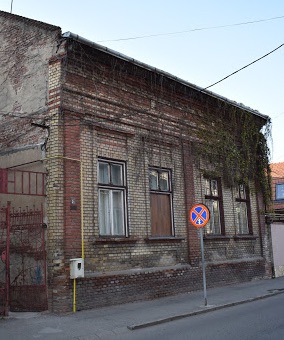
There were a few stories of locals who tried to help, tried to save Jews. Paul’s grandmother, who was not Jewish, brought bags of food for their neighbors and threw them over the fence to help their former Jewish neighbors. His mother, who was just a girl at the time, managed to get food and sweets through the fence to give to her friends from school. Those are certainly acts of kindness, but not resistance. One does not dare to judge people until one walks in their shoes, yet still it is hard to comprehend such cooperation of the other villagers with the authorities.
Paul submitted to the Israeli Holocaust Institute, Yad Vashem three names to be considered for the “Righteous Among the Nations” designation, given to people who saved Jews during the war. Two were awarded and a third was denied, “because by that time there were no more living survivors to testify.”
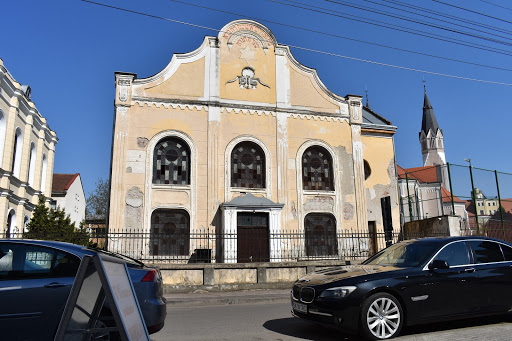
The Rebbe, Yoel Teitelbaum, an avid anti-Zionist was saved by Rudolf Israel Kastner, a Zionist emissary who negotiated with Adolf Eichman to save over 1600 Jews from Auschwitz. Kastner managed to get about 1,600 Jews who were selected to be saved from Auschwitz and the Rebbe was among them.
In 1953 Kastner was accused in Israel of being a traitor and collaborating with the Nazis. In 1957 he was assassinated outside his home in Tel Aviv. His killers belonged to the same rightwing Zionist organization which in 1933 assassinated Haim Arlozorov, who negotiated what became known as the “Transfer Agreement” with the Nazis.
Paul told me that Kastner was from the area, he was in fact from Cluj. “He was not a traitor. He left his own family here, most of whom died, and saved others. It was stupid to accuse him of being a traitor.” The Kastner affair was a very big deal in Israel, and to a large degree remains unsettled. Kastner himself, who went from being hailed a hero to being tried for collaboration with the Nazis, is still a controversial figure.
Before I left Satu Mare for the second stop on my journey, Lviv-Lemberg in Ukraine, I went to see the great synagogue, which was just around the corner from my hotel. I was there at 8:30 in the morning, which is when the office opens and visitors are allowed to go in and see the synagogue. I hadn’t planned to meet Paul again but he stopped by anyway on his way to work.

We walked through the old synagogue, built in 1892, where Rabbi Yoel Teitelbaum, a man of great religious zeal and a vocal anti-Zionist, used to pray and lead the services. It is a lovely structure but in need of repair, and repair requires funds which they do not have. “See the Parashat Hashavua?” Paul pointed out the decorated notice board where the weekly Torah portion is displayed. “This is the last parasha, the last portion that was read in this synagogue before the Jews were forced into the ghetto, and it remains there as an eternal memory.
“Come upstairs, I want to show you something,” Paul said as he lead me into the administration building behind the synagogue, and up the stairs to the second floor. As we walked, we talked more about the Holocaust, about Rudolph Kastner and his famous transports of selected Jews. The Zionists paid the Nazis enormous amounts of money so that these Jews could be saved. Finally, Paul pointed to a copy of the Israeli declaration of independence that was on the wall. He pointed straight to the signature of my grandfather, Avraham Katznelson. “That is my grandfather,” I said.
“I know,” he replied, looking at me, “I know the whole story.”

